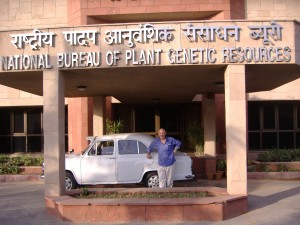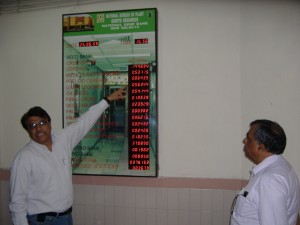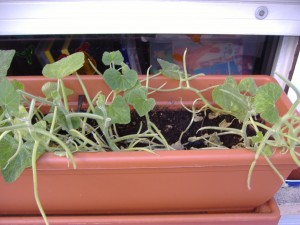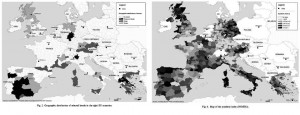Must remember to ask if they have any of this.
BBC’s Nature Inc. tackles “one sexy tuber”
…some agribusinesses and farmers are seeing sustainable profits and productivity in encouraging crop diversity.
This I gotta see. But, alas, probably wont. Please watch and let us know how exactly agribusiness is encouraging potato diversity.
A menu of political diversity
“Traditional” usually means indigestible or overcooked. “Organic” means it costs more.
I’m not going to fall into the trap of taking satire seriously enough to correct misapprehensions. 1 But that’s a tiny snippet from a very entertaining piece on The Economist’s Europe View. It explains menu items such as Cutlet Carpathian Style 2 and other gems. What I want to know is, could we do the same for traditional, neglected and underutilised species?
You know you have a Kikuyu in the house…
…when you find the pumpkin (kahurura) plants defoliated to colour the mashed potatoes.
Livestock landraces and marginality in Europe
Visually, by comparing the map of INDEX2 (Fig. 6) [right] with the one of the distribution of breeds (Fig. 2) [left], it can be seen that the studied breeds seem to be consistently located in regions defined as marginal by the indices.
Well, maybe. Click on the image to see better. But it seems a stretch to me, and the more rigorous logit analysis that the authors subject the data to isn’t exactly overwhelming. If I understand it correctly, the best that a combination of various proxies for marginality can do in predicting the presence of local sheep and goat breeds is 19%. And that’s with breed distribution data which seems to be biased towards marginal areas anyway.
Local sheep and goat breeds are generally argued to be remarkably well adapted to marginal rural areas.
That’s certainly a dominant meta-narrative, and not just for livestock, for agrobiodiversity as a whole. I may even believe it. But not a huge amount of evidence for it here.



